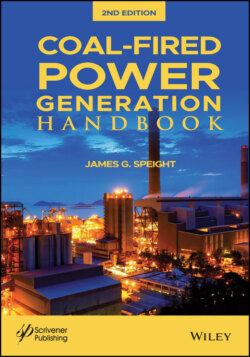Читать книгу Coal-Fired Power Generation Handbook - James Speight G., James G. Speight - Страница 39
2.3.6 Coal as an Organic Rock
ОглавлениеCoal, in the simplest sense, consists of vestiges of various organic compounds that were originally derived from ancient plants and have subsequently undergone changes in the molecular and physical structure during the transition to coal (Chapter 1) (Speight, 2013 and references cited therein).
Some mention will be made of the nomenclature and terminology of the constituent parts of coal, i.e., the lithotypes, the macerals, and the microlithotypes (Stopes, 1919, 1935; Spackman, 1958; Speight, 2013). It is unnecessary to repeat this discussion except to note that this particular aspect of coal science (petrography) deals with the individual components of coal as an organic rock whereas the nomenclature, terminology, and classification systems are intended for application to the whole coal. Other general terms that are often applied to coal include (i) coal rank and (ii) coal grade, which are employed to describe the particular characteristics of coal.
The kinds of plant material from which the coal originated, the kinds of mineral inclusions, and the nature of the maturation conditions that prevailed during the metamorphosis of the plant material give rise to different coal types. The rank of a coal refers to the degree of metamorphosis; for example, coal that has undergone the most extensive change, or metamorphosis, has the highest rank (determined from the fixed carbon or heating value (Chapters 1, 5, 6). The grade of a coal refers to the amount and kind of inorganic material (mineral matter) within the coal matrix (Chapter 1). Sulfur-containing organic structures are, perhaps, the most significant of the non-hydrocarbon constituents because of the potential to generate sulfur dioxide during combustion.
